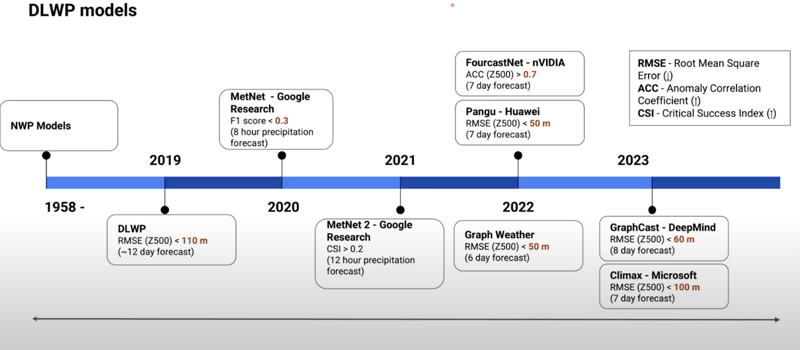Toward an open science foundation model for weather and climate
Toward an open science foundation model for weather and climate

Figure: Evolution of climate models
Valentine “Val” Anantharaj, Oak Ridge National Laboratory
Reliable forecasting of weather and assessment of risks at any location or region of the world requires the coordinated monitoring of weather and acquisition of data. A variety of data are routinely collected from diverse observing systems, including ground-based instruments and satellite platforms. The data are then integrated via numerical weather prediction systems using sophisticated data assimilation techniques on supercomputers to produce timely predictions and associated uncertainties that are used to make routine probabilistic forecasts and issue any associated warnings.
Recently, data-driven machine learning (ML) models have demonstrated their potential to augment the deterministic forecasts of NWP systems. A few of these ML models can also be broadly characterized as “foundation models” that have been developed based on AI Vision Transformer (ViT) architecture. The foundation models also offer capabilities to integrate heterogeneous data by fine-tuning a pre-trained model. This approach is very promising for weather and climate research and applications. Data from multiple modalities and resolutions can be employed for a range of new capabilities.
The speaker will also provide an overview of a recent collaborative initiative, led by NASA, IBM and ORNL, to develop an open science foundation model for weather and climate. The presentation will also outline and discuss the emerging opportunities for using foundation models leveraging the value chain of climate data from simulations and observations of the earth system while leveraging DOE exascale systems such as Frontier, and the Advanced Computing Environment (ACE) Testbed at the OLCF.